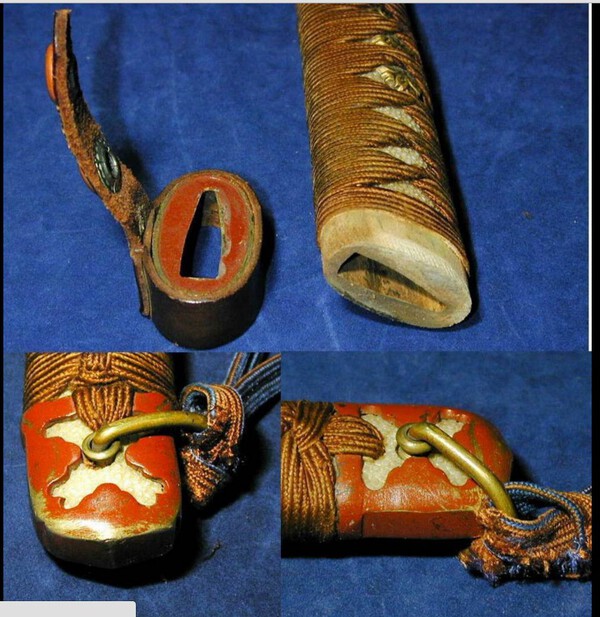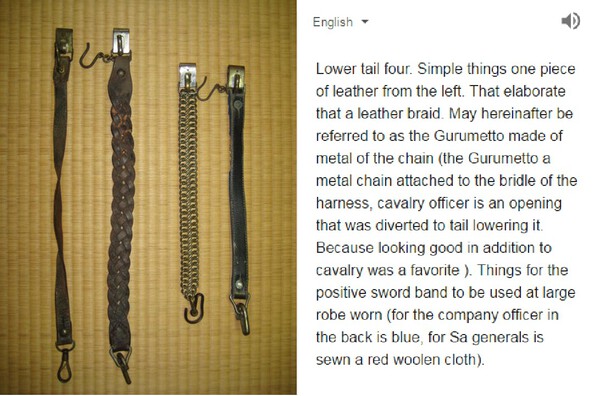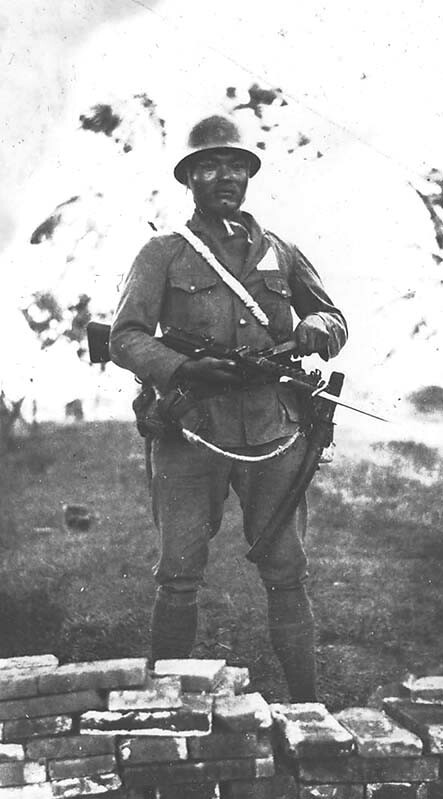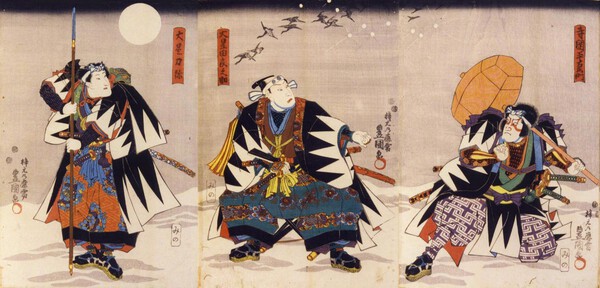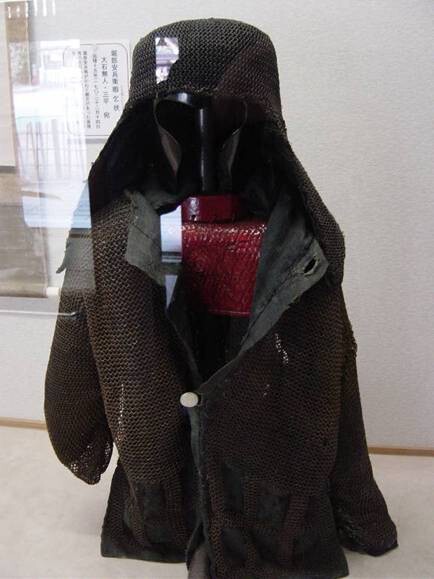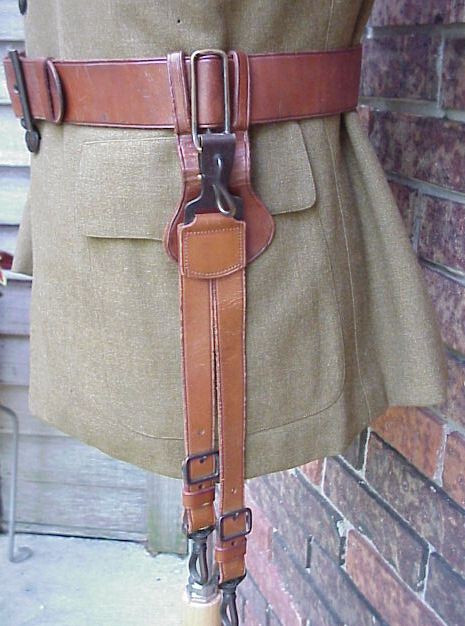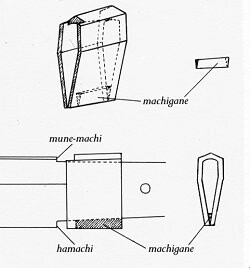-
Posts
1,690 -
Joined
-
Last visited
-
Days Won
11
Content Type
Profiles
Forums
Events
Store
Downloads
Gallery
Everything posted by Dave R
-
The tosugo look like current Chinese replicas to me.
-
Plain sarute are quite common, and especially so on plainer mounts as would be expected. This one looks like a replacement though. Most Gunto mounts are brass, but with a copper finish, either electroplated on, or possibly achieved by acid treating to remove the zinc from the alloy. The reason most likely being that casting brass is quite easy, but copper is a different matter needing a higher temperature and not flowing into the mold as readily or accurately. Brass is also a fair bit tougher and harder than copper The copper finish does rub off though either through wear or overpolishing.
-
I once had a stack of plain unpierced Gunto Tsuba from a school friend, which he had from his father.... 1971 - 72, hard to remember detail that far back. Finished but not gilded. My guess is that they came from a factory in Japan. Ohmura illustrates Shin-Gunto and Kai-Gunto without tabs or clips.
-
To me the sword at the top of the thread is a "bitser" possibly with an older blade. Shin Gunto mounts are normally finished with a copper plating, except for a gilded tsuba.... with the exception of our old friends the "mystery swords", which also had black same! Have you put the tang up on the translation or nihonto sections of this forum? If you do, check out rules for posting tangs first.
-
A much abused blade, with potential. It all depends on what they want to do with it.
-
If the leather sword knot was on the sarute, I would go with the NCO theory, but it ain't. That's all.
-
That might be how they arrive with the returning Vet'. Regulations are for a グルメット gurumetto from the haikan to the sword belt, and the rank tassel on the sarute. A lot can happen in the field, and even more to a post battle pick up. Officers carrying an NCO sword is a fairly well known happenstance, and NCO's carrying a sword in Buke Zukuri, but I would be very interested to see hard evidence for an NCO with a type 98 in field or formal koshirae. Nick Komiya has a fair bit to say on the subject. http://www.warrelics.eu/forum/Japanese-militaria/master-index-reference-articles-written-nick-komiya-691796/
-
I wouldn't give too much weight to the NCO tassel, it's been fastened to the suspension loop rather than the sarute. Otherwise it looks like a typical older blade in Shin-Gunto field mounts for a commissioned officer. Nice sword!
-
Whalebone is a bit of a misnomer, which is why I also used the term baleen, it's more like horn than anything else. A thread here on baleen wraps. http://www.militaria.co.za/nmb/topic/4494-baleen-whale-wrapping-of-tsuka/
-
Very hard to tell from photo's, but materials I know to have been used for Ito include lacquered paper, and whalebone also known as Baleen. I wonder if lacquered leather or rawhide would give the same effect as well. Regarding utility, the weatherproofing would be an advantage in some circumstances. It's far from unknown for the whole tsuka to be lacquered for this reason.
-
Posted in the wrong section. These are not Gunto.
-

Swapping out good koshirae
Dave R replied to Jussi Ekholm's topic in General Nihonto Related Discussion
This has been going on for a long time, I have heard dealers anecdotes from the 1970's that would, as we say in the UK, "make your hair curl"! -
Who are you calling "Grey"!
-
Bought my bottle of "the stuff" on Ebay.
-
Exactly! A lot of stuff made in small workshops, and a lot of variation. Also worth remembering that Junk saya tend to get stripped before reaching the market (dealers are not stupid) and a good saya is no longer cheap.
-
This is why we see stripped saya.....
-
I have the same issue, the odd missing screw on Koiguchi. I have seen it suggested elsewhere that screws from spectacle repair kits/shops might fit. Someone else also mentioned that old Japanese screws tend to be BSA thread.
-
They were certainly destitute, being Ronin, but their weapons will have been functional. I strongly suspect that the missing parts and poor condition are due more to later souvenir hunting and neglect.
-
I like the comment, but not the neglect . There is a cycle of plays that effectively tell the story of the 47, but names changed to protect the producer... It was not a popular theme with the authorities, so the events were portrayed as heroic fiction. The prints of the plays are well worth looking at. One intriguing thing of the original action, was the public declaration as it happened that this was a "legitimate act of revenge" and no threat to other neighbouring households.
-
I remember reading that they deliberately chose longer swords, not caring about the law, as this was a mission they would not survive. The armour they wore was put together in secret, and to a certain extent improvised.
-
If it wasn't for the cherry blossom menuki, I would say that this was one of those swords that tend to get lumped together as "Satsuma Rebellion" swords, aka Okashi-To. All the other parts are fairly old and not Gunto. The Ito looks right, but "economical" or has shrunk.
-
I have no doubt but that someone will turn up an army or navy belt with two hangers for the Shin and Kai Gunto... However not having seen one to date I do wonder if they used the same solution as the US did in the 1900's.
-
This could be the case especially if it's a "bitser", however habaki often look as if they're splitting (usually on older blades) when they are not. A proper habaki, unlike the Chinese fakes and repro's is two pieces, the second piece being the machi-gane which supports the ha-machi from below. Some habaki have the ha split to accommodate the edge, and some are not. I prefer the kind without a split as I think it provides better protection for the delicate ha-machi, but the slit type give a nicer, snugger profile to the habaki at the ha.
-
I make my own, either from bamboo spatulas, or bamboo knitting needles either of which gives you a decent thick strong piece to work with. If I was cutting I would get the smoked bamboo from Namikawa. I cut them to a basic shape, and then put them in a drill chuck and file them down as they rotate, which gives a nice round section to them.


